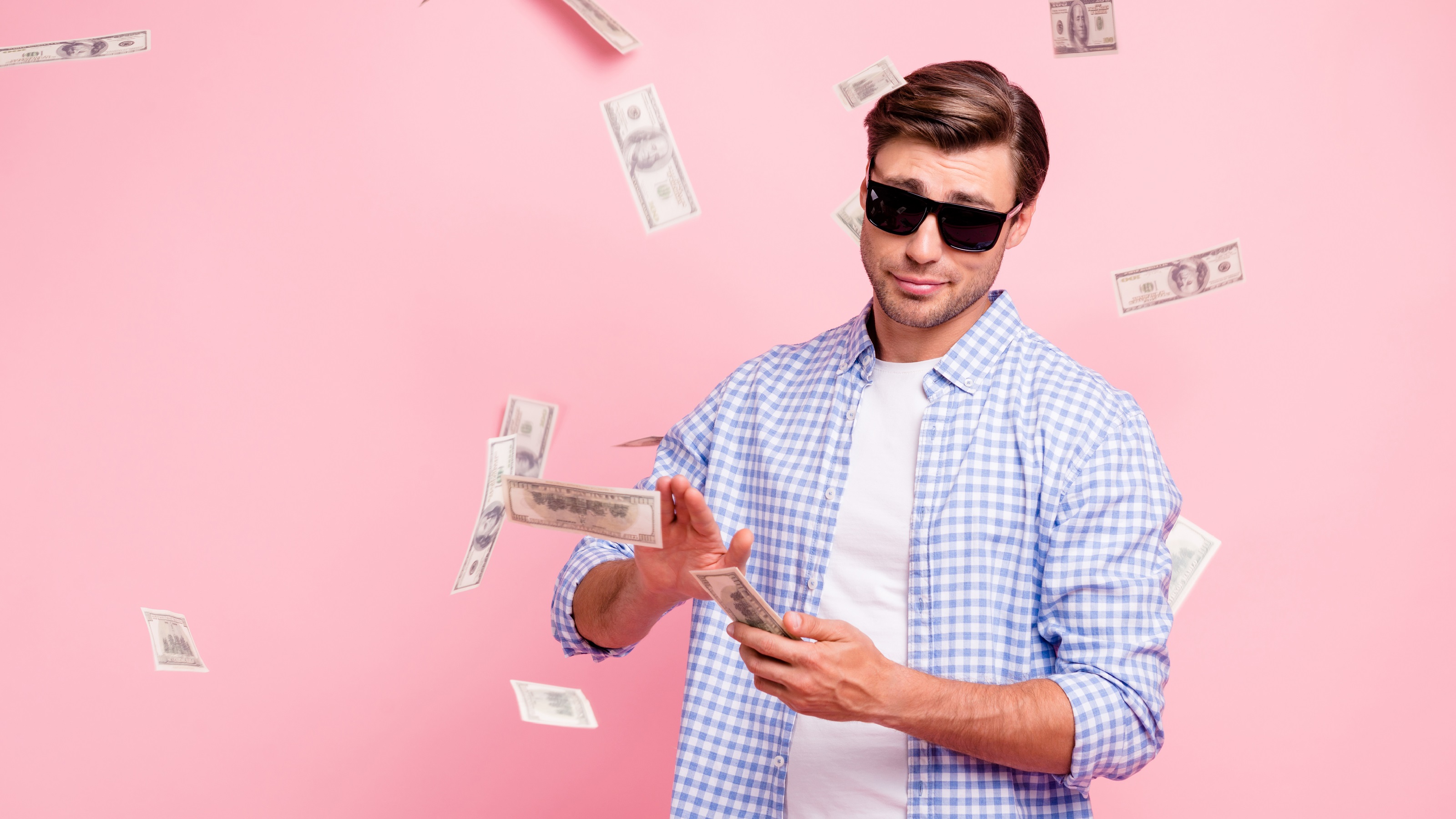What are Trump's Positions on Capital Gains Taxes?
Harris and Trump have different views on taxing capital gains. See what Trump said he would do if elected to the White House.

Getting the right tax advice and tips is vital in the complex tax world we live in. The Kiplinger Tax Letter helps you stay right on the money with the latest news and forecasts, with insight from our highly experienced team (Get a free issue of The Kiplinger Tax Letter or subscribe). You can only get the full array of advice by subscribing to the Tax Letter, but we will regularly feature snippets from it online, and here is one of those samples…
Let's talk about the federal taxation of capital gains, in light of the results of the elections and the post-2025 expiration of many provisions in the 2017 Tax Cuts and Jobs Act.
Taxation of long-term capital gains
Long-term capital gains of individuals are taxed at favorable rates. Profits from the sale or exchange of capital assets held for more than a year are generally subject to capital gains tax rates of 0%, 15% or 20%.

Sign up for Kiplinger’s Free E-Newsletters
Profit and prosper with the best of expert advice on investing, taxes, retirement, personal finance and more - straight to your e-mail.
Profit and prosper with the best of expert advice - straight to your e-mail.
The rates are based on income thresholds that are adjusted annually for inflation. For 2024, the 0% rate applies to taxpayers with taxable income up to $47,025 on single returns, $63,000 on head-of-household returns and $94,050 on joint returns. The 20% rate begins at $518,901 on single returns, $551,351 on head-of-household returns and $583,751 on joint returns. The 15% rate applies to filers with taxable incomes between the 0% and 20% break point.
Before 2018, long-term capital gains tax rates were based on your federal income tax bracket. The 0% rate applied to people in the 10% or 15% income tax brackets; the 20% rate hit filers in the 39.6% top bracket, and the 15% rate was for filers in the other tax brackets. The pre-2018 capital gains tax rules are slated to return after 2025, unless Congress acts.
Though most long-term capital gains are taxed at the 0%, 15% or 20% rates, some do have higher rates. For example, long-term profits on the sale of art, antiques, coins, historical documents and other collectibles have a 28% top rate. And depreciation recapture from the sale of depreciated real estate is taxed at as much as 25%.
There's also the 3.8% tax on net investment income (the NII tax). The NII tax applies to single filers with modified adjusted gross incomes (AGIs) over $200,000, joint filers with modified AGIs over $250,000, and married people filing separately with modified AGIs above $125,000. The 3.8% NII tax is due on the smaller of NII or the excess of modified adjusted gross income over these set amounts.
NII includes what is commonly thought of as investment income: Dividends, capital gains, taxable interest, annuities, royalties and passive rental income. Trade or business income derived through a passive activity is also NII, provided that the business income isn’t otherwise subject to self-employment tax.
Donald Trump's position on capital gains tax
Trump has repeatedly said he wants to make the tax cuts in his 2017 tax law permanent and take it further with even lower federal income tax rates for individuals. Trump hasn't said what else he proposes to do with long-term capital gains tax. At one time during his presidency, he floated the idea of a temporary capital-gains tax holiday, but that concept went nowhere.
Project 2025 might provide some insights into what Trump is envisioning for capital gains taxes. This policy blueprint, which was designed for the next Republican administration and spearheaded by the conservative-leaning Heritage Foundation, suggests two changes to the capital gains tax.
First, Project 2025 calls for a 15% top long-term capital gains tax rate, down from 20% now. The last time the U.S. saw a top 15% capital gains tax rate was in 1941.
Second, Project 2025 supports the idea of indexing capital gains for inflation each year. Essentially, if this concept was enacted, taxpayers would be able to increase their tax basis in capital assets by the rate of inflation between the purchase date and time of sale.
Here's a simple example of how capital-gains indexing would work: Say you bought stock in early 2010 for $10,000 and sold it in January 2024 for $35,000. Absent inflation indexing, you would have a $25,000 long-term capital gain ($35,000 - $10,000). With indexing, using the Chained CPI-U inflation measure, your tax basis in the stock would jump to $13,740, making your capital gain $21,260 ($35,000 - $13,740), thus lowering your tax bill.
Indexing capital gains for inflation may sound simple, but it's not. There are lots of complexities involved:
- Choosing the appropriate inflation index
- Tax basis isn't always static for investments that you hold (think reinvested dividends), so the calculation to adjust for inflation can get tricky
- It would benefit mainly higher-income individuals
Trump was all over the map on capital gains indexing during his presidency. He first touted the idea and then nixed it. Larry Kudlow, Trump's director of the White House's National Economic Council, is a longtime supporter of capital gains indexing, as are powerful conservative free-market lobbying groups.
Kamala Harris's position on capital gains tax
For the sake of comparison: Harris proposed increasing the top long-term capital gains rate to 28%, up from 20% now. Harris's capital gains tax proposal would apply only to the extent that a taxpayer's taxable income exceeds $1 million.
For example, take a married couple who reports $1,400,000 in taxable income on their joint federal tax return, $500,000 of which is long-term capital gain. Under Harris's proposal, $400,000 of the capital gain would be taxed at 28%, and $100,000 would be taxed at 20%. The last time the federal long-term capital gains tax rate reached 28% was in the late 1990s.
Also for the sake of comparison, Joe Biden had an idea to tax unrealized capital gains at death. This idea would treat death as a realization event for federal income tax purposes, essentially a deemed taxable sale of the decedent's capital assets at fair market value, with capital gains and losses reported on the decedent's final individual income tax return. Gifts would also be treated as a realization event for income tax purposes.
There were lots of exceptions and limits to this proposal, including a $5 million lifetime gain exclusion. This regime was meant to act as a backstop to the proposed higher capital gains tax rate, so that taxpayers subject to high tax rates while alive wouldn't gift assets or hold assets until death to escape tax.
This first appeared in The Kiplinger Tax Letter. It helps you navigate the complex world of tax by keeping you up-to-date on new and pending changes in tax laws, providing tips to lower your business and personal taxes, and forecasting what the White House and Congress might do with taxes. Get a free issue of The Kiplinger Tax Letter or subscribe
Related Content
Get Kiplinger Today newsletter — free
Profit and prosper with the best of Kiplinger's advice on investing, taxes, retirement, personal finance and much more. Delivered daily. Enter your email in the box and click Sign Me Up.

Joy is an experienced CPA and tax attorney with an L.L.M. in Taxation from New York University School of Law. After many years working for big law and accounting firms, Joy saw the light and now puts her education, legal experience and in-depth knowledge of federal tax law to use writing for Kiplinger. She writes and edits The Kiplinger Tax Letter and contributes federal tax and retirement stories to kiplinger.com and Kiplinger’s Retirement Report. Her articles have been picked up by the Washington Post and other media outlets. Joy has also appeared as a tax expert in newspapers, on television and on radio discussing federal tax developments.
-
 Bouncing Back: New Tunes for Millennials Trying to Make It
Bouncing Back: New Tunes for Millennials Trying to Make ItAdele's mournful melodies kick off this generation's financial playlist, but with the right plan, Millennials can finish strong.
By Alvina Lo
-
 Early-Stage Startup Deals: How Do Convertible Notes Work?
Early-Stage Startup Deals: How Do Convertible Notes Work?Some angel investors support early startups by providing a loan in exchange for a convertible note, which includes annual interest and a maturity date.
By Murat Abdrakhmanov
-
 Should You Do A Roth IRA Conversion? Nine Things to Consider
Should You Do A Roth IRA Conversion? Nine Things to ConsiderThe Tax Letter Thinking of converting a traditional IRA to a Roth IRA? The Kiplinger Tax Letter Editor highlights nine factors you should consider before making a move.
By Joy Taylor
-
 The Economic Impact of the US-China Trade War
The Economic Impact of the US-China Trade WarThe Letter The US-China trade war will impact US consumers and business. The decoupling process could be messy.
By David Payne
-
 Will My Children Inherit Too Much?
Will My Children Inherit Too Much?If you worry about how your children will handle an inheritance, you're not alone. Luckily, you have options — from lifetime gifting to trusts — that can help.
By Mallon FitzPatrick, CFP®, AEP®, CLU®
-
 What Happens To Mortgage and Savings Rates If Trump Fires Jerome Powell?
What Happens To Mortgage and Savings Rates If Trump Fires Jerome Powell?President Donald Trump expressed his desire to remove Fed Chair Jerome Powell. If the president is successful, how would it impact your savings accounts?
By Sean Jackson
-
 Four Takeaways From Filing Your Taxes to Boost Your Financial Future
Four Takeaways From Filing Your Taxes to Boost Your Financial FutureNow that another tax season is in the rearview mirror for most of us, what lessons can you take from what you learned about your finances to plan for the future?
By Kate Winget
-
 Trump Dials Back Most Tariffs but Targets China
Trump Dials Back Most Tariffs but Targets ChinaThe Kiplinger Letter Wall Street hopes that higher tariffs on most countries are on hold for good. But the trade war between the U.S. and China is heating up.
By Jim Patterson
-
 First 100 Days: Trump's Impact on Your Finances
First 100 Days: Trump's Impact on Your FinancesHere are some opportunities to consider regarding investing, interest rates and tax cuts as the financial landscape shifts under the new administration.
By Daniel Razvi, Esquire
-
 What Would Happen if You Put Your Tax Refund in an IRA?
What Would Happen if You Put Your Tax Refund in an IRA?Not only could you get a tax break, but the compounding effect over 35 years could turn the average refund into nearly $14,000.
By Romi Savova